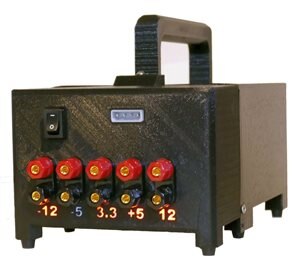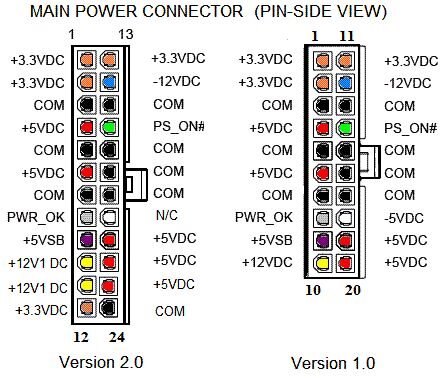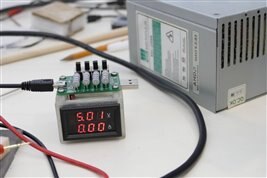 |
Enter Your Electronics & Design Project for a chance to win a $200 shopping cart! Back to homepage |
Project14 Home |
| Monthly Themes | ||
| Monthly Theme Poll |
I have a collection of old PCs from various scavenging activities. Somehow I just couldn't seem to pass up opportunities to acquire "free" PCs. They are probably all working, but I don't actually have a use for them as computers. I have "intended" for a long time to scavenge whatever might be repurposed off some of these computers - disk drives, power supplies, heat sinks, etc. But even for those items, I don't have a pressing need. I did make several attempts to design a conversion to create a bench power supply from the PC power supplies, because in the past I always seemed to need more power supplies, and they can be pretty expensive to buy.
I bought connectors and binding posts and even designed a couple of versions of PCB to get started. However I always stalled when trying to come up with a reasonable (cheap) way to package the bench supply. This Projec14 Upcycling theme is a good excuse to finally put a complete supply together.
These old PC power supplies have a bunch of output power connectors and the main connector comes in a couple of variants.
Note that the V2 connectors have all the same pins in the same places as the V1 connector so they are backward compatible, except the V2 power supplies are less likely to have a -5 V output.
Additionally, some of these power supplies need a load before they will regulate properly. The supply in the picture below is like this so I have provision for a load resistor on my PCBs.
I bought both types of connector, just in case, but the bigger one will always work, if plugged in at the right end.
I also bought a cheap commercial version (also shown in the picture below - the green card), but its tiny binding posts are at a non-standard spacing and cannot accommodate banana plugs.
Note that this particular power supply uses a V1 connector and it has a -5V output. (The LEDs from left to right indicate +12, +5, + 3.3, -12, -5)
The larger card (that is powered up in the above picture) was the first one I designed - when I had a different idea about how to package it.
The smaller card takes no more room than the power supply front face, so this is what I used in the build.
The supply I used in the build (different from the one pictured above) has a V2 connector and it does not need load resistors to regulate properly, but it has no -5 output.
Here is a video showing how these parts fit in the case I designed:
I still have enough parts to build at least 2 more complete bench supplies plus more supplies and partial kits of parts, if I can find the time or if a need arises.
These supplies do take up space, but not as much as the full PC box they came out of.
I am happy that I didn't need to order parts (because I bought them years ago) and I am happy that I can at least mostly cross this project off my backlog/bucket list of projects.
It turned out to be quite a bit more work than I had envisioned way back, but I am happy with the final look of the supply, given all the awkward constraints it needed to accommodate.
I could have picked a more photogenic color, but black was what was in the printer.
In the end it does look like a bench supply with a nice handle and it has high quality binding posts.
Update:
I traced the power switch issue to a faulty switch and fixed it:
A question arose in the comments below about how much power the 5VSB (5V stand by) pin could supply. I extracted another PC supply from yet another old PC to test it.
I connected my little load box which can switch in a load of up to four 10 ohm resistors in parallel and measure the voltage and current...
The 5VSB could supply 0.5 amps more or less okay, but 2 resistors (= 5 ohms) brought the voltage down below 3V...at which point the meter didn't have enough voltage to work.
No load = 5.01V 10 ohm load -> 4.39V, 0.46A
My power supply doesn't do anything with this pin.
Relevant links:
Project14 | Recycle & Retrofit: Reduce Waste in Style By Upcycling Vintage Electronics!






Top Comments
-

Gough Lui
-
Cancel
-
Vote Up
+7
Vote Down
-
-
Sign in to reply
-
More
-
Cancel
-

dougw
in reply to Gough Lui
-
Cancel
-
Vote Up
+6
Vote Down
-
-
Sign in to reply
-
More
-
Cancel
-

Gough Lui
in reply to dougw
-
Cancel
-
Vote Up
+6
Vote Down
-
-
Sign in to reply
-
More
-
Cancel
Comment-

Gough Lui
in reply to dougw
-
Cancel
-
Vote Up
+6
Vote Down
-
-
Sign in to reply
-
More
-
Cancel
Children